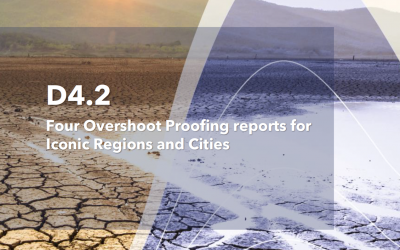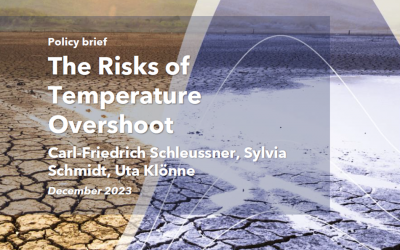The PROVIDE Climate Risk Dashboard
Overshooting the Paris Agreement temperature thresholds is a distinct possibility. Overshoot scenarios are defined by the IPCC Glossary as pathways that exceed the stabilization level (concentration, forcing, or temperature) before the end of a time horizon of interest (e.g., before 2100) and then decline towards that level by that time. Once the target level is exceeded, removal by sinks of greenhouse gases is required.
The PROVIDE Climate risk dashboard is an online platform providing detailed information on overshoot scenarios and expected impacts and their reversibility, with unique sectoral coverage including extreme events, biodiversity, cryosphere, carbon cycle, marine climate, economic damages, and socio-economic vulnerabilities, among others. The information includes global, national, and city-level modelling results. The dashboard offers innovative approaches to data presentation and a cutting-edge design co-developed in cooperation with stakeholders.
The dashboard includes an overshoot proofing module for adaptation planning which was co-developed together with a diverse group of stakeholders within the PROVIDE project.
Version 3 of the Dashboard was launched in December 2024 and the dashboard will be further developed beyond project end.

Get involved
Newsletter
Contact Us
About the Project
The 1.5°C Paris Agreement temperature goal provides the benchmark for global climate action to avoid the most devastating impacts of climate change. However, under current trajectories, overshooting (meaning the temporary exceedance of 1.5°C) the Paris temperature thresholds is a distinct possibility. The impacts of such overshoot scenarios would be particularly consequential for vulnerable regions and systems. Here, even in the case of only a temporary exceedance of 1.5°C, thresholds of abrupt and possibly irreversible shifts or adaptation limits may be exceeded. The PROVIDE project aims to deliver information on overshoot scenarios and respective impacts in the context of adaptation through an innovative web tool. You will be able to assess the risks of overshooting systemic thresholds (e.g. glacier melt) from the local to the global level. Moving beyond a limited set of climate scenarios, the PROVIDE approach allows you to make thresholds the starting point for the analysis and adaptation planning.
Latest News
Overshoot proofing adaptation plans and policies
This report presents the updated version of the Overshoot Proofing Methodology and outlines why and when it is relevant to consider overshoot scenarios in adaptation planning.
D4.2 Four Overshoot Proofing reports
Four Overshoot Proofing reports for Iconic Regions and Cities
Policy Brief: The Risks of Temperature Overshoot
We need to peak emissions before 2025 on the way to roughly halving GHG emissions by 2030 to minimise the risk of overshooting the Paris Agreement’s 1.5°C limit. However, current policies and pledged Nationally Determined Contributions (NDCs) are inadequate achieve any of these milestone. Urgent and stringent action is needed.




